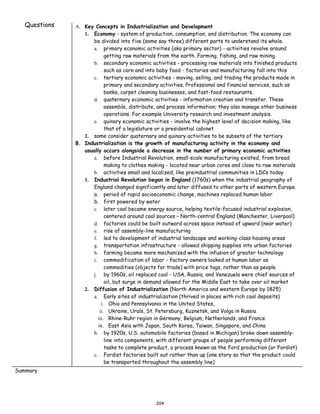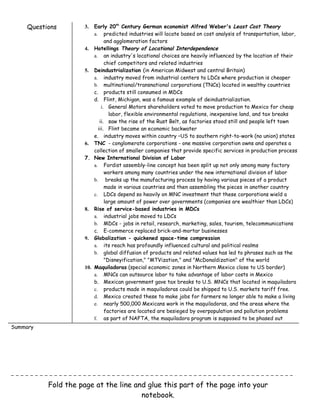The document discusses key concepts related to industrialization and economic development, including the primary, secondary, tertiary, quaternary, and quinary economic activities. It describes how the Industrial Revolution began in England and spread to Western Europe and North America, establishing industrial landscapes centered around coal and later oil sources. Factors like transportation infrastructure, global trade, and theories of industrial location influenced where industries chose to locate. Over time, deindustrialization has occurred as manufacturing moves to less developed countries for cheaper labor and production costs, leaving rust belts behind, while service industries have grown in more developed countries.

